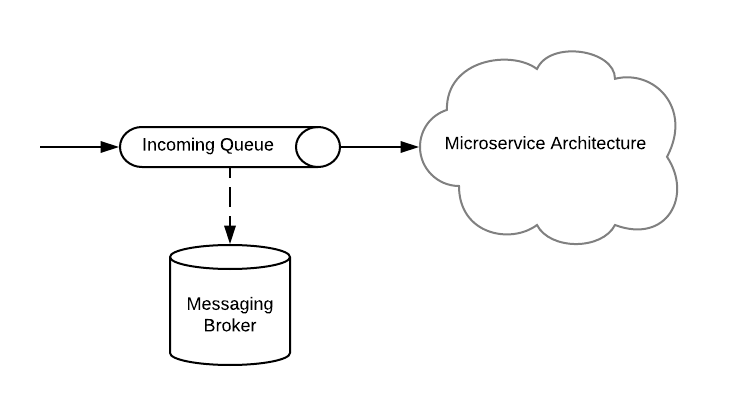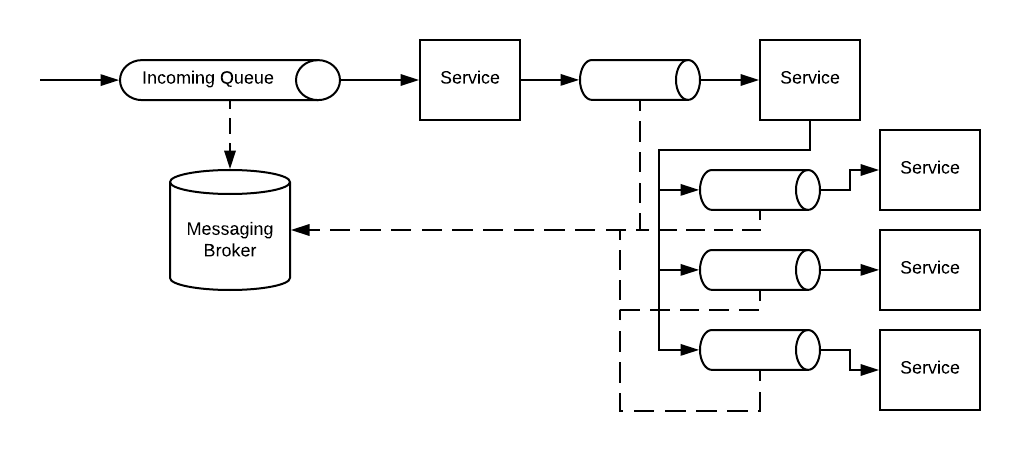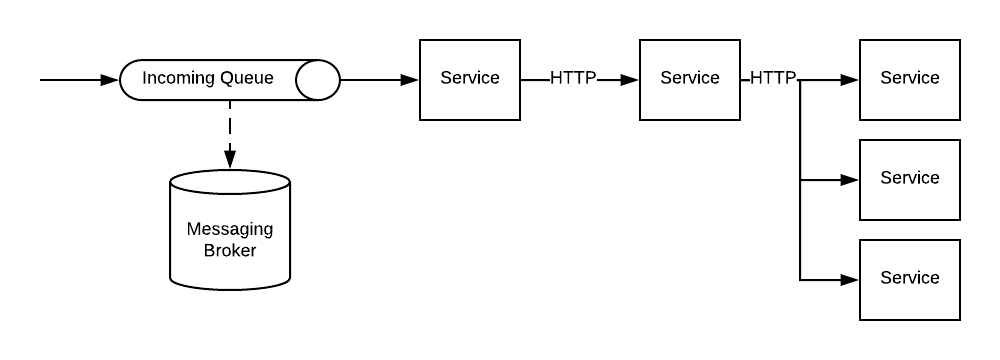Microservice Antipatterns: The Queue Explosion
Scenario

A microservice based architecture is being designed. Some of these microservices will need to interact with message queues in order to get asynchronous guaranteed processing. Often the requirement to use queues comes from integrating with an external queue based system.
Definition
Because queues must be used for some communication, they are used for nearly all communication. This seems like a good solution since it reuses the same technology and patterns across all the microservices.

To be clear, this scenario relies not just on messaging but on queues. Messages are sent to another server, which must persist the message to reliable storage before responding to the client or forwarding the message along.
Possible ill-effects include:
- Multiplying the load on message brokers, often 2-5x, requiring extensive and costly scale out of the messaging system
- No easy flow-control, fast services can produce and consume messages quickly enough to cause side effects for the slow services that are the bottlenecks and dictate overall system performance. This can cause large swings in performance as queues fill up.
- Increased latency for end-to-end processing because of repeated round trips to the messaging broker, which must persist messages to disk each time
- Increased difficulty isolating performance issues to an individual service vs the messaging brokers vs side-effects from other services impacting the messaging brokers
Solutions
Replace many (but not necessarily all) of the messaging queues with other communication:
- HTTP-based services (REST, gRPC, etc) offer low latency and high throughput compared to queues. They also have strictly lower resource requirements (network, disk, compute, memory) than a message queue solution.
- Messaging-based peer to peer or routed protocols allow services to follow similar messaging conventions, but instead of sending messages to a broker which persists messages, messages are either sent directly to another consumer via a point-to-point network connection or are sent to a router which immediately sends the message to a consumer. Examples include ZeroMQ and Apache QPID Proton.

Microservices get most of the benefits of queues with sparing application. In the above diagram the system can still smooth out spikes in requests with the single queue, and the external system and microservices are still in isolated fault domains.
In return for using HTTP or similar protocols internally, the microservice deployment will have a smaller footprint and be significantly easier to tune and diagnose issues with.
In Summary
Justify the use of each queue in a microservice architecture based on the individual needs to the participating microservices, not in an effort to use only one technique for communication across an entire system. The correct blend of asynchronous and synchronous communication increases performance, reduces costs, and simplifies operations and troubleshooting.